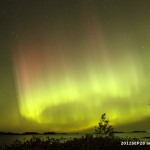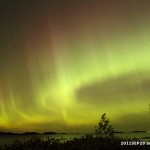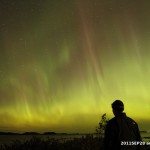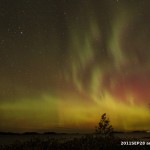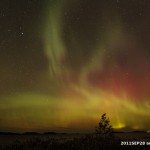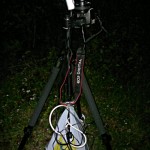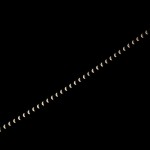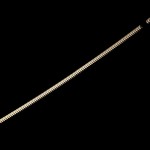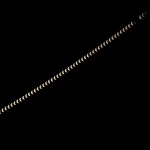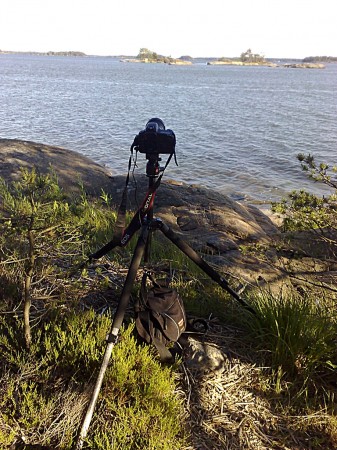First test of newest toy, a Garmin Virb Ultra 30 action-camera.
This mode records one 4k frame every second, together with the in-camera GPS position and data from ANT+ heart-rate, cadence, and speed sensors. No idea on how long the battery lasts in this mode yet.
Tag: time-lapse
Flower time-lapse movie
Still images (Logitech C270 webcam, modified for macro by placing a f=+150mm singlet lens in front of it) collected with 1 minute intervals for about a week. The flower grows too slowly to be interesting...
JPEGs assembled into a movie with
mencoder -mf type=jpeg:fps=100 mf://frames/*.jpeg -nosound -ovc lavc -lavcopts vcodec=mpeg4:mbd=2:trell:autoaspect:vqscale=3 -vf scale=1280:720 -o time-lapse.avi
Another milky way time-lapse
Before shooting auroras, I captured 60s exposures for this milky way time-lapse:
The bright star that starts out about mid-height to the left of the middle is Deneb, the brightest star in the constellation Cygnus. As it swings down and to the right the Andromeda galaxy becomes visible in the top left corner towards the end of the video.
Aurora Borealis, Oravais
Some nice northern lights (aurora borealis) appeared just as I was going to pack away by tripod and camera after shooting another fixed-tripod milky-way time-lapse.
So no packing away and instead Aurora Borealis shooting for another three hours. These are 20s exposures through a 17mm/F4 lens on a Canon 500D at iso3200. Fixed tripod.
The time-lapse video is 340 frames shot from around midnight to 3am on Wednesday 28th September 2011 looking north from Oravainen, Finland. As with all photography the camera sees things differently from the eye. The lights look brighter and more yellow on the camera, and the red hues visible on camera are very faint or nonexistent by eye.
Photo equipment was fairly simple: I hung a plastic bag containing stones on the tripod to stabilize it in the wind. Timing and shooting with an intervalometer. Shoe-driers taped to the lens with masking-tape worked as improvised dew-heaters. I'm using a Canon ACK-E5 powersupply so I don't have to change batteries constantly.
Time-lapse movie was compiled by first resizing images (JPEGs straight from the camera, no modifications) with
mogrify -resize 1280 *.JPG
and then compiled into a movie with
mencoder -nosound mf://*.JPG -mf w=1280:h=853:type=jpg:fps=8 -ovc lavc -lavcopts vcodec=mpeg4:vbitrate=2160000:v4mv -o movie.avi
Update: I also had my older 20D camera with me, and a 50/1.4 lens. No tripod, just camera placed on a wooden board pointed towards the sky. No dew problems despite no dew-heater. Here is a time-lapse of ca 400 frames exposed for 3 s. This is much darker than the first video, and doesn't bring out as much red/yellow color. This is probably closer to how it looks to the naked eye.
Fixed-tripod astro time-lapse
Up north away from the civilisation light pollution, it's easy to see the milky way with the naked eye. Here's a short time-lapse of 60s exposures with the camera on a fixed tripod (I didn't drag my tracking-mount with me this time).
Without a dew-heater it didn't take long for the lens to fog up (I didn't bring my dew-heaters either!).
Lunar time-lapse
117 frames taken 1 minute apart with 1/20s exposure through a 40mm F/5.6 lens, iso100. Shot between ca 1am and 3am early morning on Thursday 16 July 2009.
I've also combined all the images into one, using either all (1 minute interval) or some (2 and 3 minutes) of the frames:
This is clearly worth doing again when the skies are darker, perhaps with a longer focal length lens. The back-drop of stars and planets would be nice to catch also, but because the moon is very bright and the stars much fainter that will requires some HDR-magic. For a long HDR time-lapse series I would probably need a programmable intervalometer (e.g. netbook w. USB-connection to camera).
Time-lapse video of clouds and sky
About 9 hours compressed into 38 seconds. 566 frames shot at 1 minute intervals from around 10:00 in the morning to 19:36 in the evening. Played back at 15 frames per second, which makes for a ~900x speedup.
I first re-sized the jpegs to 1024 pixels wide and then used this matlab script to assemble the AVI-file. The original 20 Mb AVI may have better resolution than the youtube version.
Canon 20D with 17-40/4L lens on Manfrotto 486RC2 ballhead and Velbon Sherpa pro CF 635 tripod. Timing with a 'Yongnuo' TC-80N3a remote from dealextreme.com.
